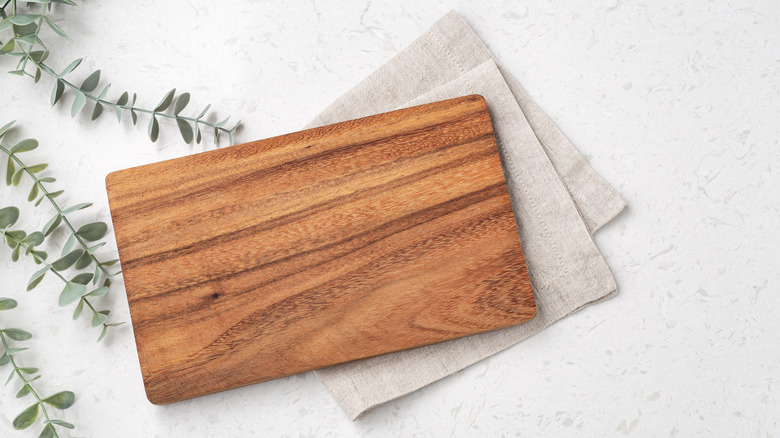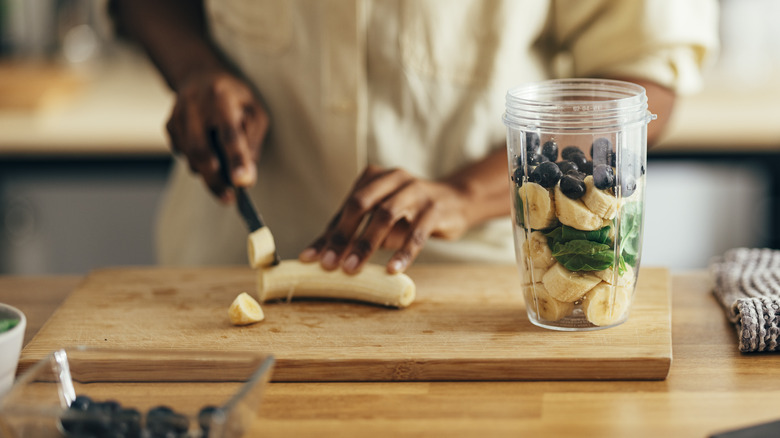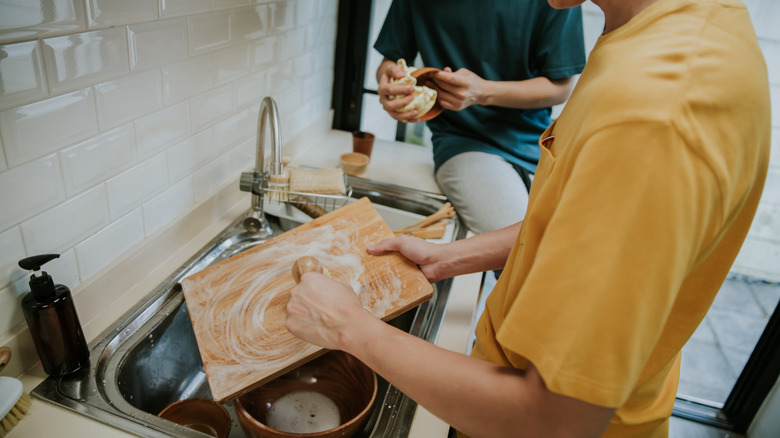The Correct Way To Store Wooden Cutting Boards So They Last Way Longer
Wooden cutting boards have long been a kitchen staple; they serve as a great base for slicing fruits and vegetables but can also double as a presentation board for your favorite cheese and charcuterie. However, they are often viewed as a little harder to maintain than plastic cutting boards, given that they can easily warp. But the secret to making those wooden boards last longer is simpler than you think: just make sure to store boards vertically, which ensures no moisture gets trapped beneath the cutting board's surface.
While wooden cutting boards look nice, they are made of wood, a natural material whose shape can shift if exposed to too much moisture. They're also porous, meaning bacteria can get trapped within those almost-microscopic holes; you have to clean them thoroughly (as in, use quite a bit of water) so they stay safe to use, which makes drying them vertically that much more important.
Why you should store your wooden cutting boards vertically
When you use a wooden cutting board, it's placed horizontally on your countertop. But once it's cleaned and dried first with a towel, you should never store it horizontally. This will prevent air from getting underneath the board, and it won't dry properly. That lack of air means moisture stays locked in, which ultimately causes the board to warp — and a warped board can be tricky to use because it alters that ordinarily flat surface.
When you put a clean cutting board away, wipe it down first to remove as much water as possible. Then, store it vertically, such as in a lower cabinet where it will likely have enough room to stand up. This will allow it to finish drying fully, which will help the board last longer. For the most part, you should never put a wooden cutting board in the dishwasher unless it specifically says that it's safe to do so. Another way to help them last longer is to flip the board after each use; this will help limit the wear and tear on either side.
Be careful about what you prepare on a wooden cutting board
Wood is porous, which means it's full of tiny holes that absorb water and, even worse, bacteria. While wooden boards are perfectly safe for slicing things like vegetables, cheese, and cooked meat (as long as they are always properly deep-cleaned afterward), you should avoid preparing raw meat on wood; save that for the plastic boards.
Raw meat often harbors potentially dangerous bacteria, such as E. coli and salmonella, which can get lodged inside those tiny holes. When you clean the cutting board's surface with soap and water, that bacteria isn't always easily removed, meaning you risk foodborne illness if the board isn't thoroughly sanitized after placing raw meat on its surface. Your best bet is to stick to plastic for cutting or preparing meat, which isn't porous and can usually be placed right in the dishwasher. If you must prepare raw meat on a wooden board, the USDA says to sanitize it with "1 tablespoon of unscented, liquid chlorine bleach per gallon of water."


